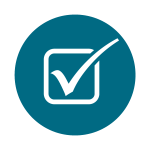02. IS Auditing Standards and Continuous Frameworks

Chapter 02 begins with exploring the relevant frameworks and standards that serve as a cornerstone of the IS Auditing profession. They ensure uniformity and excellence in auditing practices across diverse environments. We will examine how adherence to these standards enhances the quality of audits and bolsters the auditor’s credibility in the eyes of stakeholders. Ethics form the cornerstone of any profession, and IS auditing is no exception. We will also explore the IS Auditors' Code of Ethical Principles to understand the moral compass that guides auditors and discuss the fundamental principles that underpin the code of ethics and the ethical dilemmas auditors frequently encounter. The implications of violating these ethical standards are significant and can have far-reaching consequences for the auditor and the audited entity.
Next, we will delve into Computer-Assisted Auditing Techniques (CAATs), a pivotal element in enhancing the effectiveness and efficiency of modern IS auditing. We will explore data analysis and mining techniques by reviewing the essential tools in the auditor’s arsenal for handling vast amounts of data in today’s digital world. This will also include a quick tour of the process of developing CAATs-based audit programs and the various tools and software used for this purpose.
Our next topic will be the concept of continuous Auditing and monitoring. Here, we compare continuous auditing techniques with traditional periodic auditing methods. Real-time analysis, automated alerts, and notifications have transformed how audits are conducted. We will cover critical metrics for constant monitoring and discuss how these methods are integrated with existing control frameworks. This approach represents a paradigm shift in Auditing, moving towards a more proactive and dynamic model.
Lastly, we will focus on the role of Quality Assurance and Continuous Improvement in IS Auditing. Quality assurance is not just a compliance requirement but an integral part of delivering value through audits. We will discuss the role and Importance of quality assurance in IS auditing, exploring the components of a practical quality assurance framework. We will also touch upon benchmarking and best practices, essential for any auditor committed to continuous improvement and excellence in their craft.

Learning Objectives
By the end of this chapter, you should be able to
- Explain IS Auditing Standards’ evolution, role, and Importance.
- Describe the fundamental principles of the IS Auditors’ Code of Ethics and their application in professional practice.
- Recognize the consequences and professional implications of violating the Code of Ethics in IS auditing.
- Develop data analysis techniques using Computer-Assisted Auditing Techniques (CAATs).
- Compare and contrast continuous Auditing and monitoring vs. traditional periodic Auditing.
- Develop insights into quality assurance and continuous improvement practices in IS auditing, including practical components and benchmarking strategies.
Fundamental ethical principles guiding IS auditors, focusing on integrity, objectivity, confidentiality, and competency.
A range of software applications and tools used by auditors to analyze an organization's data, evaluate controls, and test compliance within computerized systems as well as enable auditors to perform various audit procedures electronically, including data extraction and analysis, anomaly detection, and simulation of control tests
Audits that evaluate an organization's adherence to external standards, laws, and regulations as well as internal policies and procedures.
Methods for conducting audits on a more frequent or continuous basis, as opposed to traditional periodic audits.
Systematic processes and practices to verify that audit activities meet established standards, guidelines, and regulatory requirements.

